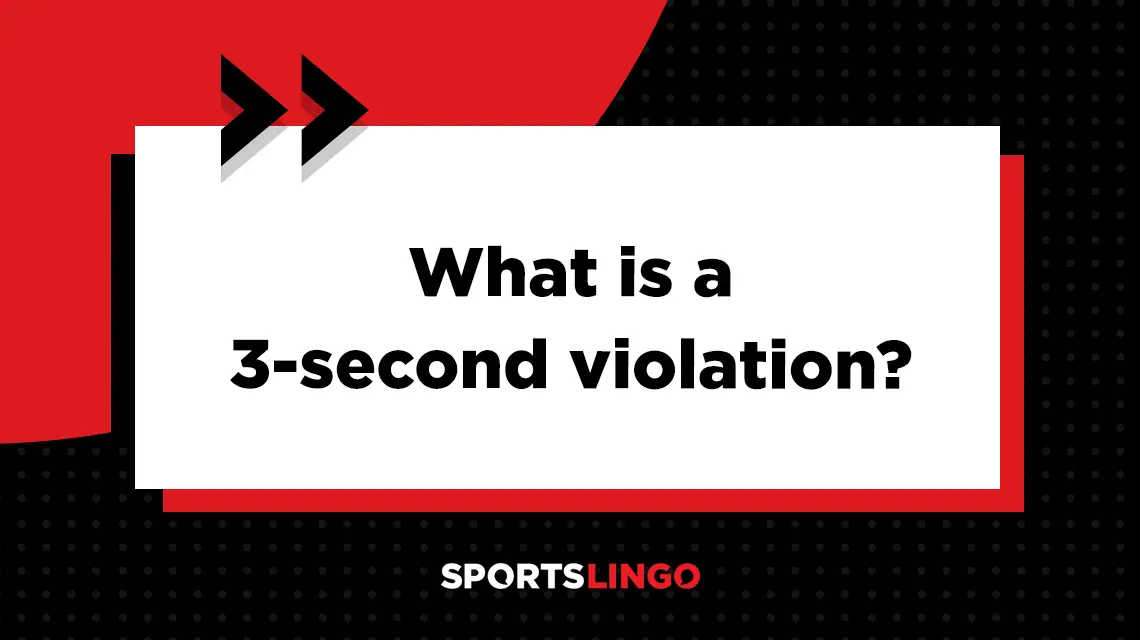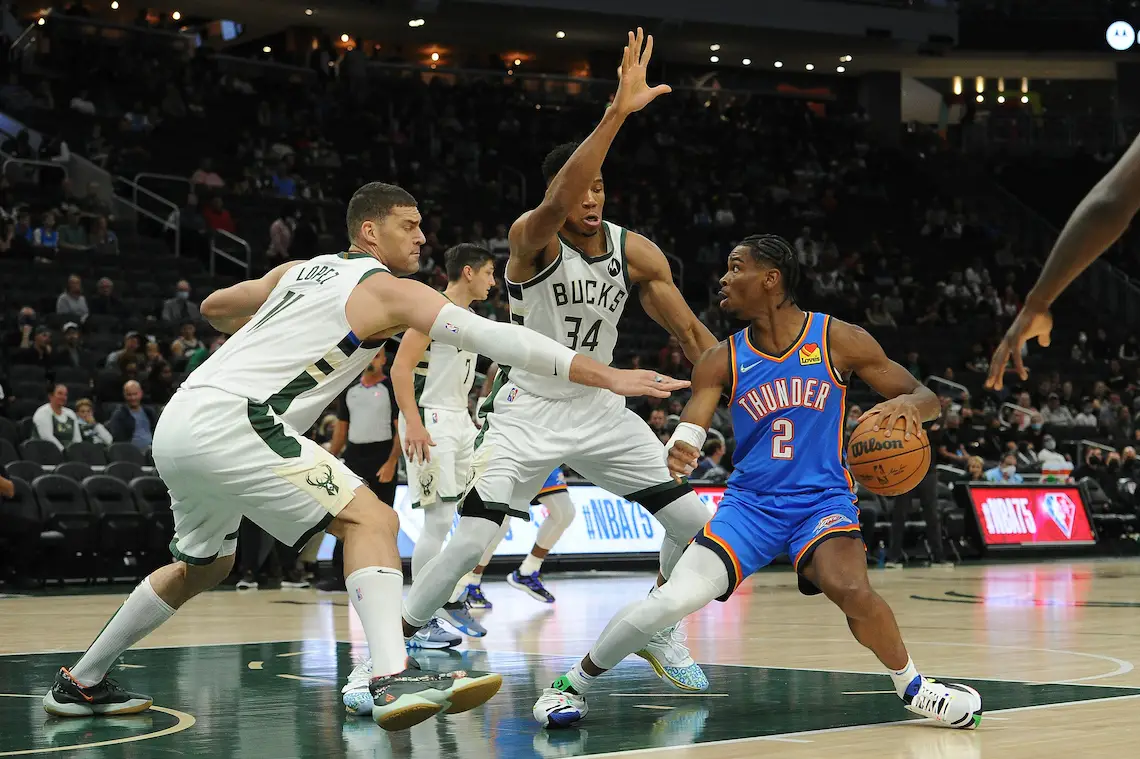
3 sec*ond vi*o*la*tion
What is the definition of a 3-second violation in basketball?
1. The 3-second violation is an excessive time violation in basketball when an offensive player stands in the paint, or free throw lane, for longer than three seconds. This violation exists so that offensive players don’t sit under the basketball hoop for the entire duration of shot clock and fight for an offensive edge over their opponent.
In order to not get called for this violation, the offensive player must step out of the paint in three seconds or less. Once they are out of the paint, they may then step back in.
There is also a defensive three-second violation, known as illegal defense, based on a similar rule for defensive players.
What is the difference between a 3-second violation in basketball and a defensive 3-second violation in basketball?
There are two types of three-second violations in basketball:
- Offensive three-second violation
- Defensive three-second violation
Both of these violations involve the same restricted area: the free throw lane (also known as the 16-foot lane, the key or the paint), which begins at the free throw line and extends to the baseline (also known as the endline). Players cannot stay in this area for longer than three consecutive seconds.
What is an offensive 3-second violation in basketball?
An offensive 3-second violation occurs when an offensive player exceeds three seconds in the paint. This rule helps to keep the game moving since it forces players to stay in motion rather than just waiting for a pass near the hoop.
What is a defensive 3-second violation in basketball?
The defensive 3-second rule applies only to defensive players. They cannot stay in the free throw lane for more than three seconds at a time unless they are actively defending a member of the opposing team. This means they must be within an arm’s length of the player and in a guarding position.
The defensive three-second violation only applies in the NBA and the WNBA. It is not included in the rulebook for International Basketball Federation (FIBA), National Collegiate Athletic Association (NCAA) or high school basketball.
What is an example of a 3-second violation in basketball?
An offensive 3-second violation occurs when a offensive player stands with at least one foot in the paint for more than three consecutive seconds. The player can be called for this type of violation regardless of whether they have possession of the ball. An exception is made when the player is making an attempt to score, including dribbling to the basket, shooting, or preparing to jump up for a dunk.
The following is an example of a violation of the three-second rule on offense:
A similar defensive 3-second rule applies to defensive players as well. When the other team has control of the ball, defensive players may only be in the paint for more than a 3-second count if they are actively guarding an offensive player. Otherwise, they must limit their time in the paint to three seconds or less.
Is a 3-second violation 1 or 2 feet?
The three-second count for an offensive or defensive player begins when one foot enters the paint. The count continues until both feet are out of the paint.
The 3-second rule in basketball only applies to offensive players while their team has control of the ball in the frontcourt. This violation does not apply if an offensive player is in the lane when their teammate in possession of the ball is still in the backcourt.
What is the penalty for a 3-second violation in basketball?
The penalty for a three-second violation depends on whether the player who committed the violation is on offense or defense.
- Offensive three-second violation penalty: The offensive team is penalized with a turnover, which means they lose possession of the ball. The opposing team is awarded the ball and gets to bring it inbounds from the sideline at the free throw line extended.
- Defensive three-second violation penalty: The defensive player is charged with a technical foul. The offensive team is awarded the ball and can bring it inbounds from the sideline at the free throw line extended. If this violation is called while the offensive team is making a successful field goal attempt, the ref’s call is ignored and play continues as usual.
What is the purpose of the three-second rule in basketball?
The 3-second violation is a basketball rule that was instated to prevent an unfair advantage to defensive or offensive players. Without it, the big men on a team might simply stand under the basket and wait for a pass or block. The three-second rule encourages basketball players to keep moving on the court and use creative strategies to score or defend, which leads to a more dynamic and exciting game.

Michael McLoone/USA TODAY Sports
What are the 5 violations in basketball for excessive time taken?
The three-second violation is one of five total violations in the game of basketball which are related to excessive time taken:
- 3-second violation
- Defensive 3-second violation
- 5-second violation
- Shot clock violation
- Backcourt violation
Examples of how 3-second violation is used in commentary
1. Duncan tries to fight for position under the basket, but gets called for a three-second violation therefore turning over the ball.
SportsLingo goes the extra-inch with the meaning of 3-second violation
The 3-second violation was first implemented in 1935 so that no offensive team could gain a competitive advantage over their opponent by camping out under the basket. If this rule were not in place, offensive players could establish a position under the basket that would allow them to gain an advantage in rebounding, scoring and even with setting screens. For example, if the offense were able to stand under or near the basket for an unlimited time, a center could potentially set a permanent screen under the basket, allowing for their quicker teammates to go around them and score easy layups.
Sport the term is used
1. Basketball
Also known as:
1. Three-second rule
2. Three in the key
3. Lane violation